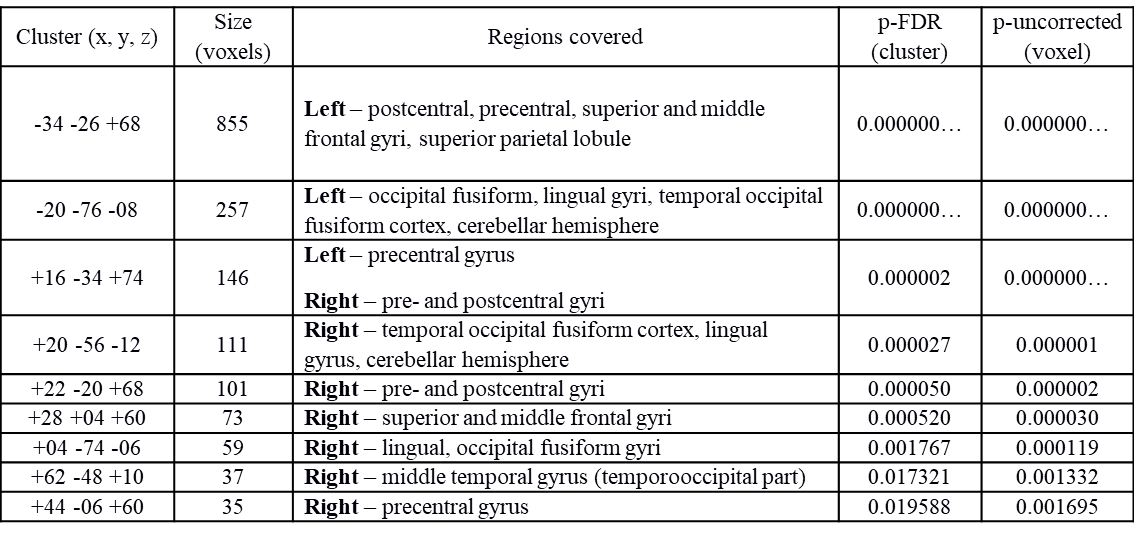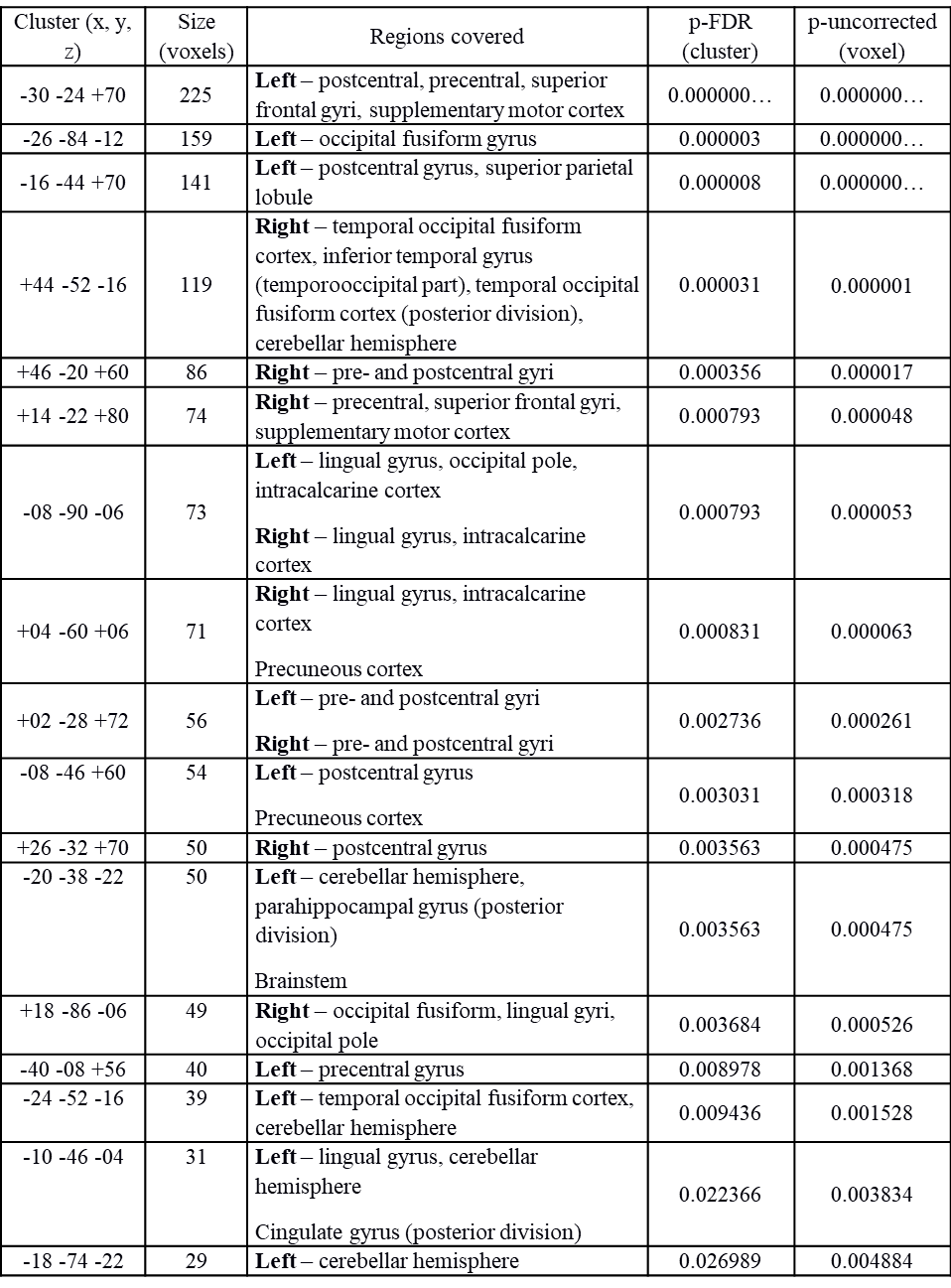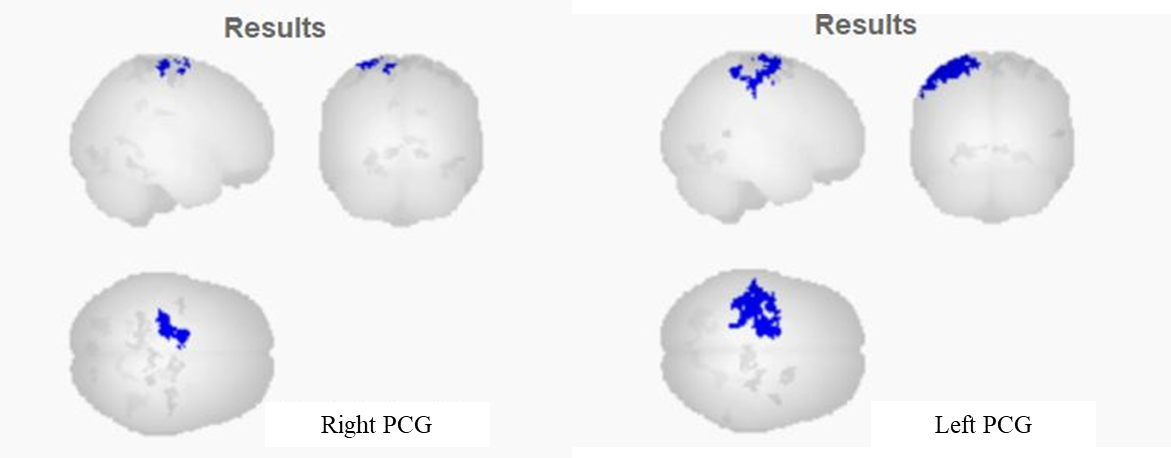Category: Parkinson's Disease: Neuroimaging
Objective: To explore functional effect of intermittent theta burst stimulation (iTBS) protocol over primary motor cortex (M1) in Parkinson’s disease (PD) patients.
Background: PD is one of the most common neurodegenerative diseases. Bilateral high-frequency repetitive transcranial magnetic stimulation (HF-rTMS) over primary motor cortex proved itself useful in PD patients. In the last few years there is a growing attention to iTBS protocol as an alternative to HF-rTMS. However, underlying mechanisms and effects of iTBS remain to be unclear. Functional connectivity (FC) assessment is one of the most useful methods to investigate those mechanisms.
Method: 9 PD patients were enrolled in the study, divided randomly into 2 groups: active (1 male, 4 females; mean age 64.6±11.4 years) and sham (2 males, 2 females; mean age 62.3±13.2 years) stimulation. Patients in the active stimulation group received bilateral iTBS (600 pulses at both sides) over M1 (hand area); sham stimulation was performed with sham coil. Task-based functional MRI (tb-fMRI; 3.0 Tesla scanner) was conducted 4 times: before the course, then 1-3 days after the last session, both times separately in “off” and “on” conditions. The paradigm for tb-fMRI was finger tapping in a blocked design (30 s blocks, 30 s interval, with total of 4 blocks per each hand). Received functional data preprocessing and analysis were performed using CONN21.a and SPM12.
Results: We performed seed-to-voxel analysis (cluster threshold <0.05, voxel threshold <0.001) with precentral giri (PCG) as a seed. There was a significant decrease in FC with multiple clusters in active stimulation group compared to sham, when in “off” condition, both for left [table1] and right [table2] PCG. Both for left and right PCG, the largest clusters covered regions in the left hemisphere (postcentral, superior and medial frontal giri, superior parietal lobule, supplementary motor area) [figure1]. No significant changes were found in “on” condition.
Conclusion: iTBS shows potential to form a stable neuromodulation effect in “off” condition in PD patients; lack of it in “on” condition implies some sort of dopaminergic medication effect yet to be revealed. The asymmetry of change in functional connectivity possibly reflects the asymmetry inherent to PD, which, however, requires further investigation.
To cite this abstract in AMA style:
G. Kotsoev, E. Fedotova, E. Kremneva, I. Bakulin, A. Poydasheva, N. Suponeva. Effects of intermittent theta burst stimulation over primary motor cortex on functional connectivity in Parkinson’s disease patients [abstract]. Mov Disord. 2023; 38 (suppl 1). https://www.mdsabstracts.org/abstract/effects-of-intermittent-theta-burst-stimulation-over-primary-motor-cortex-on-functional-connectivity-in-parkinsons-disease-patients/. Accessed December 27, 2025.« Back to 2023 International Congress
MDS Abstracts - https://www.mdsabstracts.org/abstract/effects-of-intermittent-theta-burst-stimulation-over-primary-motor-cortex-on-functional-connectivity-in-parkinsons-disease-patients/



